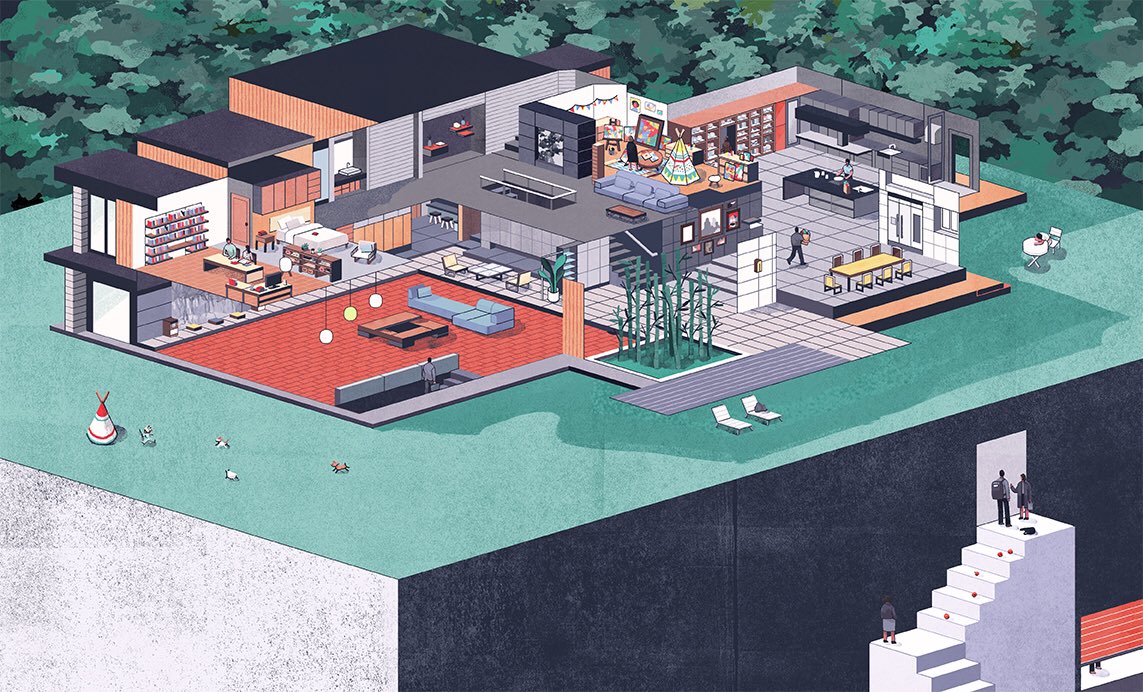
This is the Parks' house. Here, we can see the main locations where the action takes place in the film.
This design was made by Korean-based Illustrator Jisu Choi and used in the French Blu-ray cover.
For the sake of our Visualization we will simplify things a bit. Let’s go back to the basics of the house’s floor plan.
Hovering over each area you can see what room of the house it represents.
Additionally, we have added some key locations that were not in the original drawing like the Basement and the Bunker.
Also, some aid elements were added to understand how different areas of the house are connected.
We have divided the scenes in the Parks' house into 8 important moments. To read what happens in each moment you can click on the above legend.
Each circle represents a Character.In the Scene mode, we visualize who is staying longer in each room and the actions that they are performing. We have classified character's actions in:
- Up & Down:when characters use stairs.
- Static:characters that don’t move because of a conversation or leisure.
- Move.
- Hiding.
In the Locations mode, we summarize the rooms that appear the most in the film. Brushing over small time ranges in the menu, you can see how the action evolves from place to place in the film. Also we have divided the house into 3 different floors:The second floor, where the Parks rooms are located, the first floor, where the Living room and the Garden are, and the Street and underground level.Across the film, the location that appears the most is the Living room. The secret Bunker, the Basement and Garden gain prominence as the film goes by.
Now, feel free to play around with the house before moving forward.